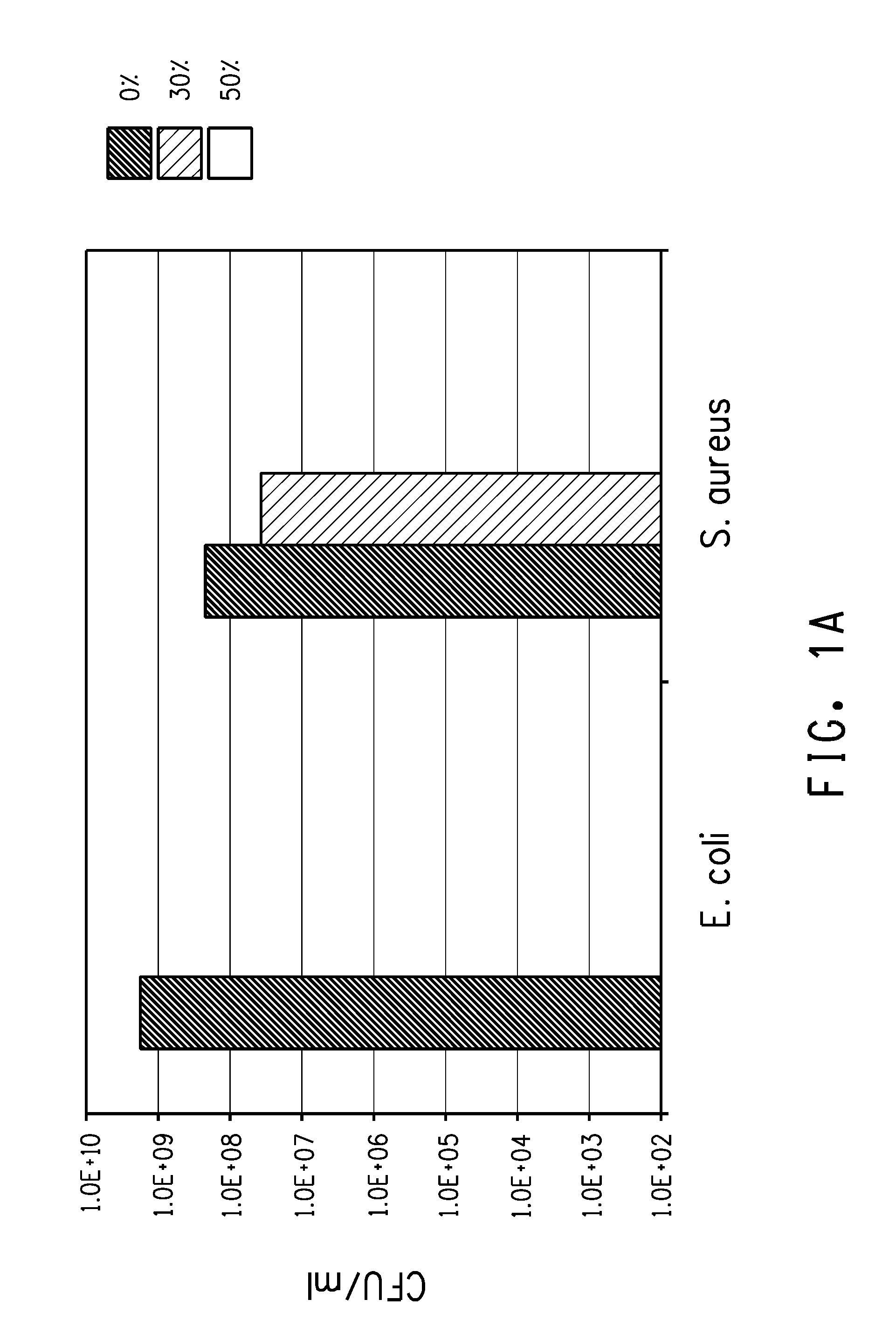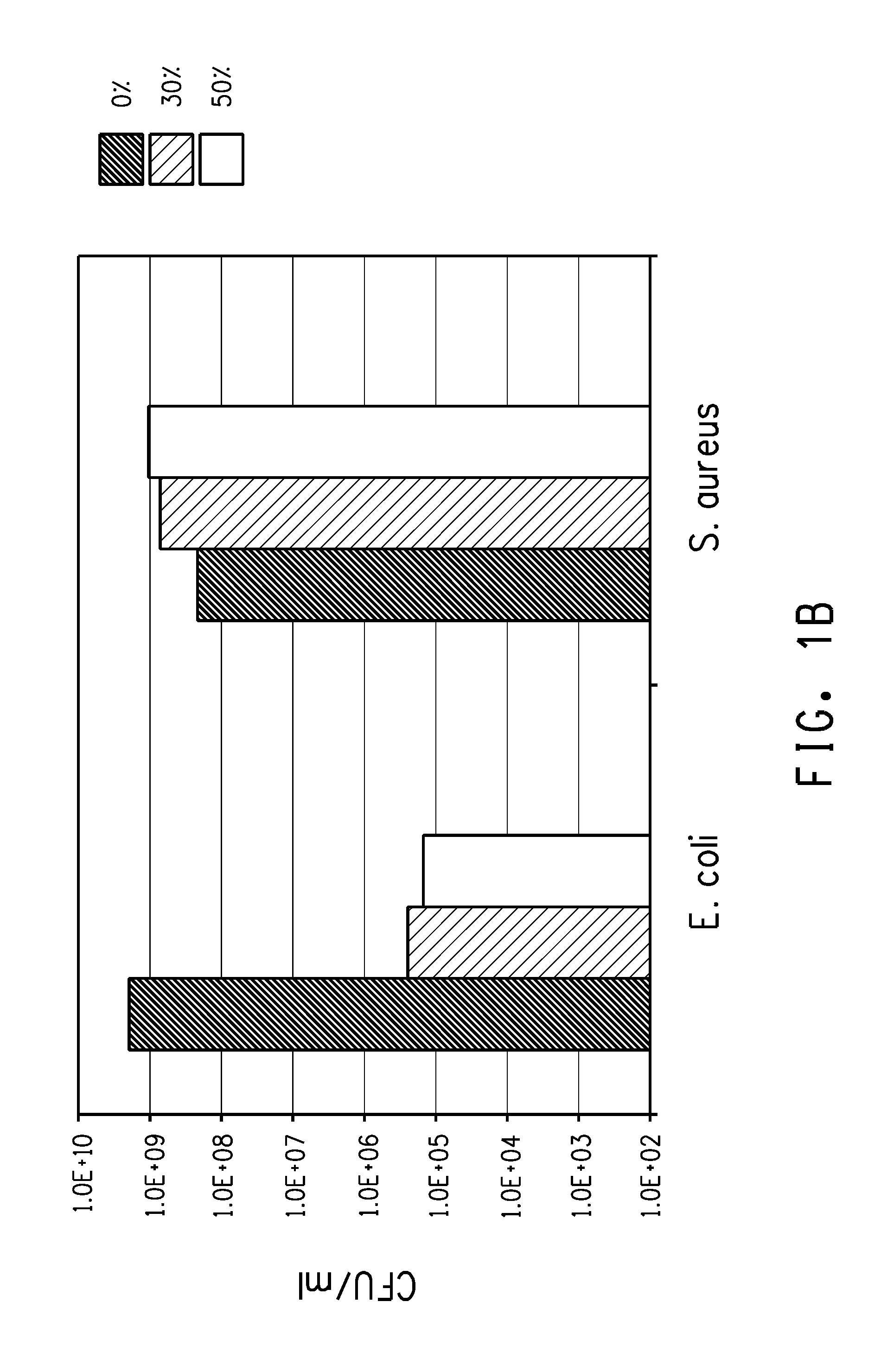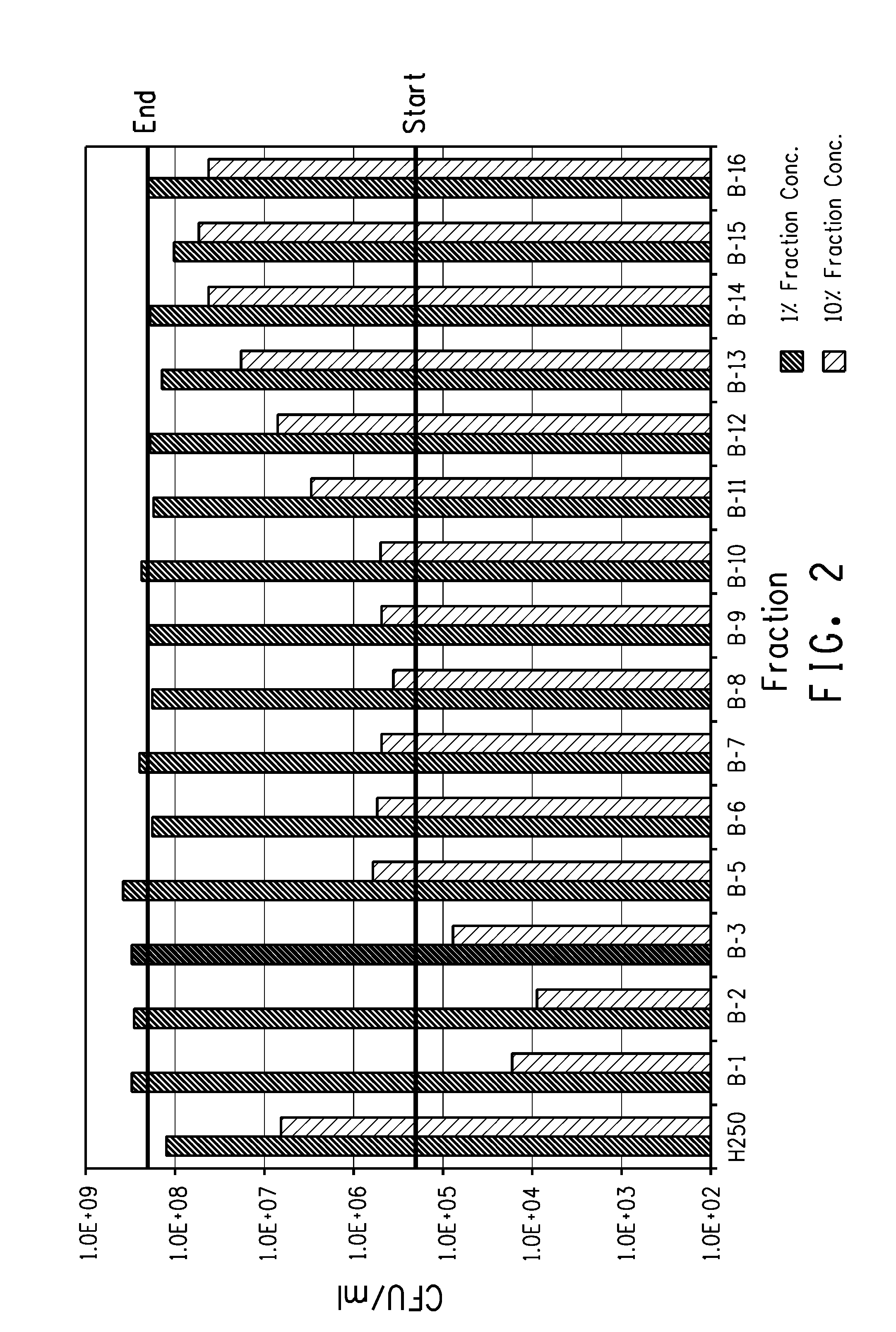Antimicrobial compositions comprising trimethylene glycol oligomer and methods of using the compositions
- Summary
- Abstract
- Description
- Claims
- Application Information
AI Technical Summary
Benefits of technology
Problems solved by technology
Method used
Image
Examples
example 1
Antibacterial Properties of Poly(Trimethylene Ether) Glycol
[0101]Samples of polytrimethylene ether glycol with an average molecular weight of 250 and 650 (Cerenol® 650, available from E. I. du Pont de Nemours and Company, Wilmington, Del.) were added to Mueller-Hinton II Broth (cation-adjusted) so that the final concentration of the polymer was 30% (1.5 mL polymer+3.5 mL broth) and 50% (2.5 mL polymer+2.5 mL broth). The controls were prepared the same way using sterile DI water in place of polymer. The E. coli inoculum was added to one set of tubes, the S. aureus inoculum was added to another set of tubes. The initial inoculum concentrations were 3.0×105 CFU / mL and 3.1×105 CFU / mL for E. coli and S. aureus, respectively. The tubes were incubated on an incubator-shaker (275 rpm, 37° C.) for approx. 20 h.
[0102]After the incubation, an aliquot from each sample was removed and diluted in sterile phosphate buffer. Each dilution (10−1, 10−3, 10−5 and 10−7) was spread plated onto Tryptic so...
example 2
Antibacterial Properties of Trimethylene Glycol Oligomers
[0103]The unfractionated polymer 250 MW, each distilled fraction, and a control were tested for antibacterial or bacteristatic properties against E. coli.
[0104]Each sample (0.5 ml), or a dilution of the sample (0.5 ml), was added to 4.5 ml of M9 Broth (cation-adjusted) so that the final concentration of the test material was at 1 and 10%. Numbers in exponential format are indicated with “E”, i.e. 2.2×10+9 are written as 2.2E+09.
[0105]The results are shown below in tabular form below in Table 3. FIG. 2 shows the concentration of E. coli with various fractions at a conc. of 1% or 10%. The two black bars indicate the conc. of E. coli in the control samples at the start and end of the incubation. They demonstrate that fractions B-1, B-2, and B-3 show bacteristatic effects at 10% concentration.
TABLE 3ResultsTube #SampleConc. (%)CFU / mL1Control-12.5E+082Unfractionated106.4E+063Unfractionated11.3E+084Fraction B-1101.7E+045Fraction B-...
example 3
Gram Negative and Gram Positive Antibacterial Properties of Trimethylene Glycol Oligomers
[0106]The unfractionated mixture, each fraction, and a control were analyzed for antibacterial or bactericidal properties against S. aureus. Numbers in exponential format are indicated with “E”, i.e. 2.2×10+9 are written as 2.2E+09.
[0107]The results are shown below in Table 4. FIG. 3 shows the concentration of S. aureus with various fractions at a conc. of 10%. The black bar indicates the conc. of S. aureus at the start of the incubation. This graph demonstrates that a mixture of PDO oligomers kill or inhibit the growth of Gram-positive bacterium, especially at lower and at higher fractions.
TABLE 4Tube #SampleConc. (%)CFU / mL1Control-1— 1.5E+072Unfractionated10 3.6E+063Fraction B-1104Fraction B-2105Fraction B-3106Fraction B-4107Fraction B-510 9.4E+048Fraction B-610 2.8E+069Fraction B-710 2.8E+0610Fraction B-810 1.0E+0311Fraction B-910 2.0E+0312Fraction B-101013Fraction B-111014Fraction B-121015Fr...
PUM
| Property | Measurement | Unit |
|---|---|---|
| Time | aaaaa | aaaaa |
| Percent by mass | aaaaa | aaaaa |
| Percent by mass | aaaaa | aaaaa |
Abstract
Description
Claims
Application Information
 Login to View More
Login to View More - R&D
- Intellectual Property
- Life Sciences
- Materials
- Tech Scout
- Unparalleled Data Quality
- Higher Quality Content
- 60% Fewer Hallucinations
Browse by: Latest US Patents, China's latest patents, Technical Efficacy Thesaurus, Application Domain, Technology Topic, Popular Technical Reports.
© 2025 PatSnap. All rights reserved.Legal|Privacy policy|Modern Slavery Act Transparency Statement|Sitemap|About US| Contact US: help@patsnap.com



